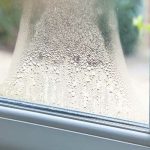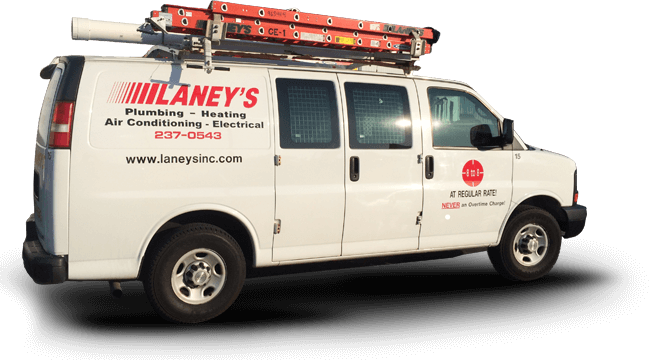
What Is Relative Humidity (And Why Does It Matter)?
While Fargo may not be the most humid place in the world, it does experience periods of fairly high humidity, both in the summer and winter. Naturally, a home’s HVAC system reduces this humidity to some degree inside the home. Still, if the relative humidity is high enough, it may not be adequate to keep the home’s indoor humidity inside the ideal range – generally between 30-50%.
So what is humidity – or, more specifically, relative humidity? Relative humidity refers to the amount of water vapor in the air at a given temperature. Warm air tends to be able to hold more vapor than cold air, which is why summer often feels so muggy. Why should this concern homeowners? Because if the relative humidity is high in their homes, it can lead to problems, from mold growth to wood damage to plain old discomfort. That’s where dehumidifiers come in. This post will discuss dehumidifiers, the signs they are needed, and the advantages of installing a whole-home dehumidifier.
What Do Dehumidifiers Do?
 As the name suggests, dehumidifiers reduce humidity levels by extracting moisture from the air. They do this in much the same way that air conditioners pull heat and water vapor from the air. The process goes something like this:
As the name suggests, dehumidifiers reduce humidity levels by extracting moisture from the air. They do this in much the same way that air conditioners pull heat and water vapor from the air. The process goes something like this:
- A fan pulls humid air into the dehumidifier unit and blows it over metal coils filled with a chemical refrigerant that keeps them cold.
- As the air comes in contact with the cold coils, the water vapor condenses into liquid form and collects on the coils (since cold air can’t hold as much moisture).
- This condensation then drips into a reservoir, which may connect to a drain via a hose or need to be manually emptied, depending on the model.
There are portable dehumidifiers, which can be handy for individual rooms, and whole-house dehumidifiers, which are installed as part of the HVAC system to serve the entire home simultaneously.
Signs Homeowners May Need a Dehumidifier
 There are a few ways to tell if a dehumidifier is needed in the home. Some thermostats feature a humidity sensor and display the indoor relative humidity as a percentage. If this consistently stays higher than 50%, even with the AC running, installing a dehumidifier is a good idea. Likewise, if the home always seems to feel stuffy or muggy, this indicates high humidity and indicates the need for a dehumidifier.
There are a few ways to tell if a dehumidifier is needed in the home. Some thermostats feature a humidity sensor and display the indoor relative humidity as a percentage. If this consistently stays higher than 50%, even with the AC running, installing a dehumidifier is a good idea. Likewise, if the home always seems to feel stuffy or muggy, this indicates high humidity and indicates the need for a dehumidifier.
A few more indicators of high humidity and the need to install a dehumidifier include if the house has a musty smell, there’s condensation on the windows, the carpet or upholstery feels damp, the wood is warping or swelling, there’s visible mold growth on walls or ceilings, or chips and crackers seem to go soft and stale quickly.
Benefits of a Dehumidifier
Installing a whole-house dehumidifier can provide various benefits in terms of health, comfort, and keeping the home in great shape. Here are a few of the most significant dehumidifier benefits:
- It improves indoor air quality by reducing the likelihood of bacteria and mold infestation.
- It helps prevent insect infestation (many pests thrive in moist environments).
- It helps prevent damage to wood, sheetrock, and furniture (humidity can cause these to warp and swell).
- It improves overall comfort in the home.
- It can help alleviate symptoms of allergies and asthma by keeping the humidity within a healthy range.
About Laney’s Inc.
Laney’s Inc. has over 60 years of experience serving Fargo and the surrounding communities. They provide competitive pricing, upfront service, and honest advice. Call them today for whole-home dehumidifier installation and repair in Fargo, ND.
Distribution Links +
- htv10.tv
- wicz.com
- snntv.com
- central.newschannelnebraska.com
- metro.newschannelnebraska.com
- midplains.newschannelnebraska.com
- northeast.newschannelnebraska.com
- plattevalley.newschannelnebraska.com
- panhandle.newschannelnebraska.com
- wpgxfox28.com
- lifestyle.mykmlk.com
- wtnzfox43.com
- lifestyle.3wzfm.com
- lifestyle.southernsportstoday.com
- lifestyle.thepodcastpark.com
- lifestyle.680thefan.com
- lifestyle.xtra1063.com
- lifestyle.953hlf.com
- lifestyle.rewind1019.com
- lifestyle.us983.com
- lifestyle.countrylegends1059.com
- lifestyle.967wshv.com
- lifestyle.1045thedan.com
- yournewsnet.com
- michigan.yournewsnet.com
- lifestyle.earl983.com
- lifestyle.maverick1023.com
- lifestyle.magic979wtrg.com
- lifestyle.1077lakefm.com
- https://smb.clemmonscourier.net
- https://smb.gatescountyindex.com
- https://smb.harlandaily.com
- https://smb.irontontribune.com
- https://smb.ourdavie.com
- https://smb.state-journal.com
- https://smb.thecharlottegazette.com
- https://smb.thecoastlandtimes.com
- https://smb.theinteriorjournal.com
- https://smb.thetidewaternews.com
- https://smb.tryondailybulletin.com
- https://smb.winchestersun.com
- https://smb.farmvilleherald.com
- https://smb.salisburypost.com
- https://smb.shelbycountyreporter.com
- https://smb.smithfieldtimes.com
- https://smb.suffolknewsherald.com
- https://smb.thewashingtondailynews.com
- https://smb.thewetumpkaherald.com
- https://smb.cordeledispatch.com
- https://smb.lagrangenews.com
- https://smb.middlesboronews.com
- https://smb.roanoke-chowannewsherald.com
- https://smb.tallasseetribune.com
- https://smb.thepostsearchlight.com
- https://smb.valleytimes-news.com













